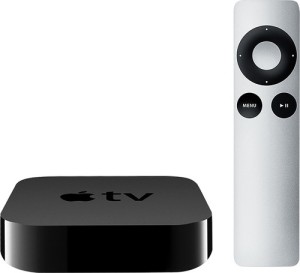 So ee have AppleTV 3 (2nd gen) deployed EVERYWHERE! This is actually our second refresh of the devices since putting them in about 2 or 3 years ago. We initially put them in as we wanted to allow teachers and students better access to presenting through AirPlay. This would allow any device in the classroom be the device people were looking at without the need for a cable or numerous adapters… it would simplify things.e
So ee have AppleTV 3 (2nd gen) deployed EVERYWHERE! This is actually our second refresh of the devices since putting them in about 2 or 3 years ago. We initially put them in as we wanted to allow teachers and students better access to presenting through AirPlay. This would allow any device in the classroom be the device people were looking at without the need for a cable or numerous adapters… it would simplify things.e
Our initial go at this proved difficult with our first deployment of AppleTVs as we had both technical issues and user training issues. The idea of projecting any video-based resource proved problematic and there were at time issue with the AppleTV showing up properly in the AirPlay menu. You needed to understand when to project wireless and when to still rely on the hard wire.
When we upgrade to the AppleTV 3s it was in hope that we would see better performance with the upgrades to AirPlay and what we being touted as a more robust version. While we did see some performance improvements it still remained somewhat of a problem, though not nearly as much as before.
We decided to run a hardwired, ethernet connection to all of the devices.
We ran the ethernet line to them for two reasons. One was to hopefully improve Airplay performance. Our thought is that while the device (laptop/iPad) is connecting wireless to the network and seeing its signal to the AppleTV, the AppleTV itself would be receiving the transmission via the wired, ethernet connection. This would help limit the amount of traffic over the wireless network and provide a more trusted connection to the AppleTV.
The other reason for this was that we have digitized all of our video content and are using PLEX to allow teachers to stream that content directly to their classrooms via the AppleTV. As mentioned previously, the quality and reliability of the video signal going to the AppleTV for Airplay was a question and while the PLEX server and the streaming video is handled differently, we wanted to make sure that we again had the wireless connection to support this new service.
Lastly, we are a JAMF shop. We manage all of our devices through Casper and have a very robust and, somewhat unique type of deployment. The biggest piece lacking with the AppleTVs for us, given the numbers we have deployed is the lack of centralized management.
Given the way we want the AppleTVs to function and our ability to push apps and manage the devices, the lack of this functionality, in any meaningful way is incredibly problematic.
We really like our AppleTVs. They provide a level of function that we would not be able to achieve with our deployment were we not to have them. All of this though does not come without its headaches and legwork that needs to go into managing them. Apple has given us, yet again, another great consumer-level device that we are trying to shoehorn into an academic/enterprise environment.
NOTE: At this time we have not deployed many AppleTV 4s. The ones that we have deployed did not support our current deployment of our PLEX installation. Additionally, the cost to replace all of the devices proved prohibitive given the timing of our most recent refresh of the device.


